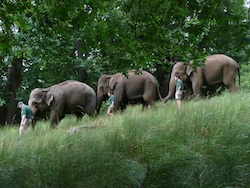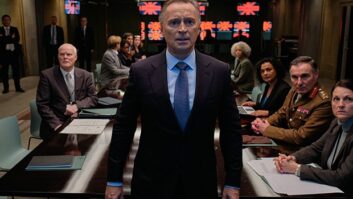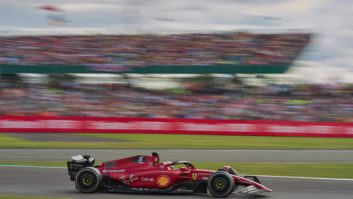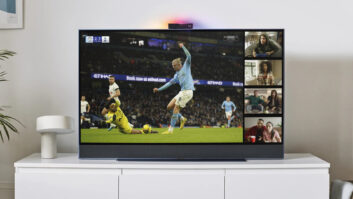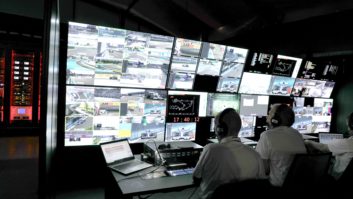Sky Sports is ramping up its operational facilities as it heads towards the launch of a 3DTV service earmarked for the first half of 2010, writes Adrian Pennington.
The latest of a series of 3D trials saw a live satellite transmission of the ATP Tennis tournament at the O2 Arena. “Until now, we have conducted one-off tests. Now we are developing the production process,” said Brian Lenz, BSkyB director of product development. “We’re shooting on multiple days, learning techniques, testing equipment and proving – or disproving – what works for camera angle, graphics presentation or handling transitions.”
The ATP event was captured using three 3ality rigs, processed by 3ality’s Stereo Image Processor (SIP) and output via fibre as two side-by-side 1080i, 540 pixel images compressed to fill one full HD frame to BT Tower. The feed was uplinked to satellite via BSkyB Chilworth and the image recombined in a 46-in JVC 3D LCD at the O2 for viewing by a select audience. Replays were played back from an EVS XT[2].
The trial was produced by a Sky Sports production team using technical support and facilities supplied by Telegenic in a modified OB unit. Sky is building a dedicated 3D truck with 3ality rigs for Telegenic to manage from mid-2010, but it is also compiling a kit and standards specification for other outside broadcast and production companies to follow, just as it did with HD a decade ago.
“We’re producing a specification of the standards we expect content to be delivered in when people go to produce 3D,” explained Darren Long, head of operations, Sky Sports. “The problem is that we’re still learning where to set the bar.”
The production employed one ‘convergence operator’ per rig, directed by a stereographer, sited in the modified OB – a manual and expensive process that Sky hopes will eventually be replaced by new automated convergence-pulling software. Sony’s prototype 3D Processor is one possibility.
“It’s important for us to learn how to produce 3D from a base level of equipment that works, rather than from developing technologies,” said Long. “No book on 3D has been written. There’s nothing you can pick off the shelf. There’s no course. We’re not arrogant enough to suggest we are writing the book – everything is a learning process.”
That said, Steve Schlair, 3ality’s CEO, has in fact devised a course for Sky Sports’ engineers, production teams and freelance camera operators to learn stereography and convergence pulling. A 3ality representative will begin that course in the UK next week.
Of note is that Sky plans to augment live coverage of events with HD camera shots converted to 3D on the fly. At the ATP trial, close-up shots of the players were processed through the SIP, giving more depth to the background layer, providing an approximation of 3D. This will cut down the cost of, and space required for, 3D rigs and according to Long “give the director more tools and specialist shots to tell the story.”
Pic caption: Sky’s 3D cameras capture footage from the ATP Masters at the O2, which was broadcast live over its satellite platform as part of the company’s ongoing commitment to delivering a 3D service next year.
